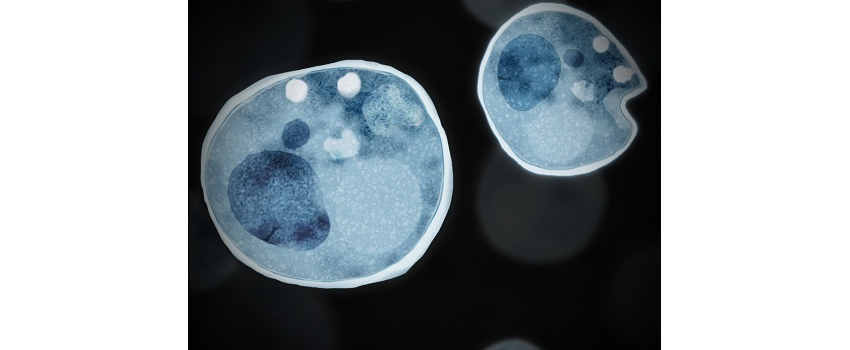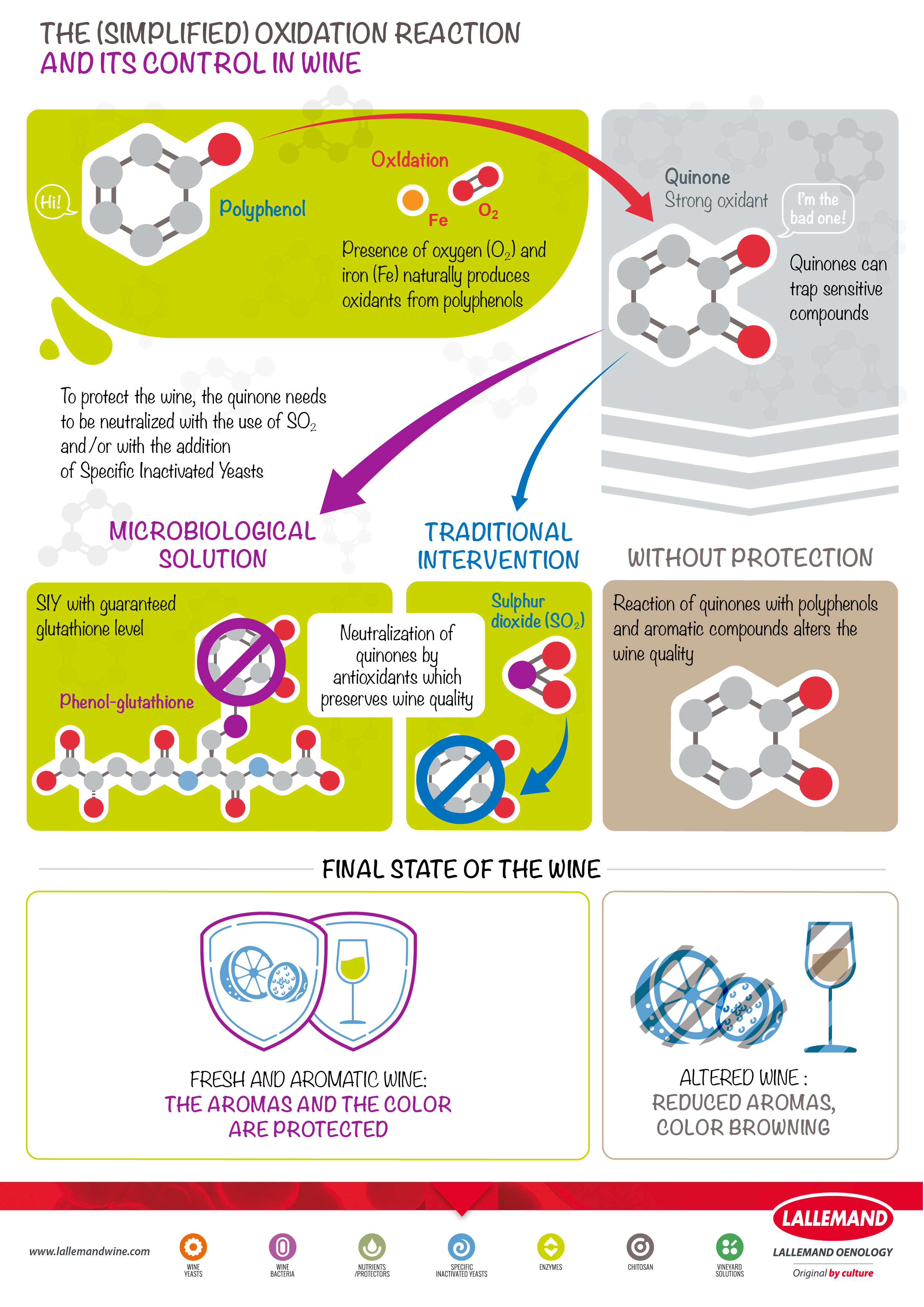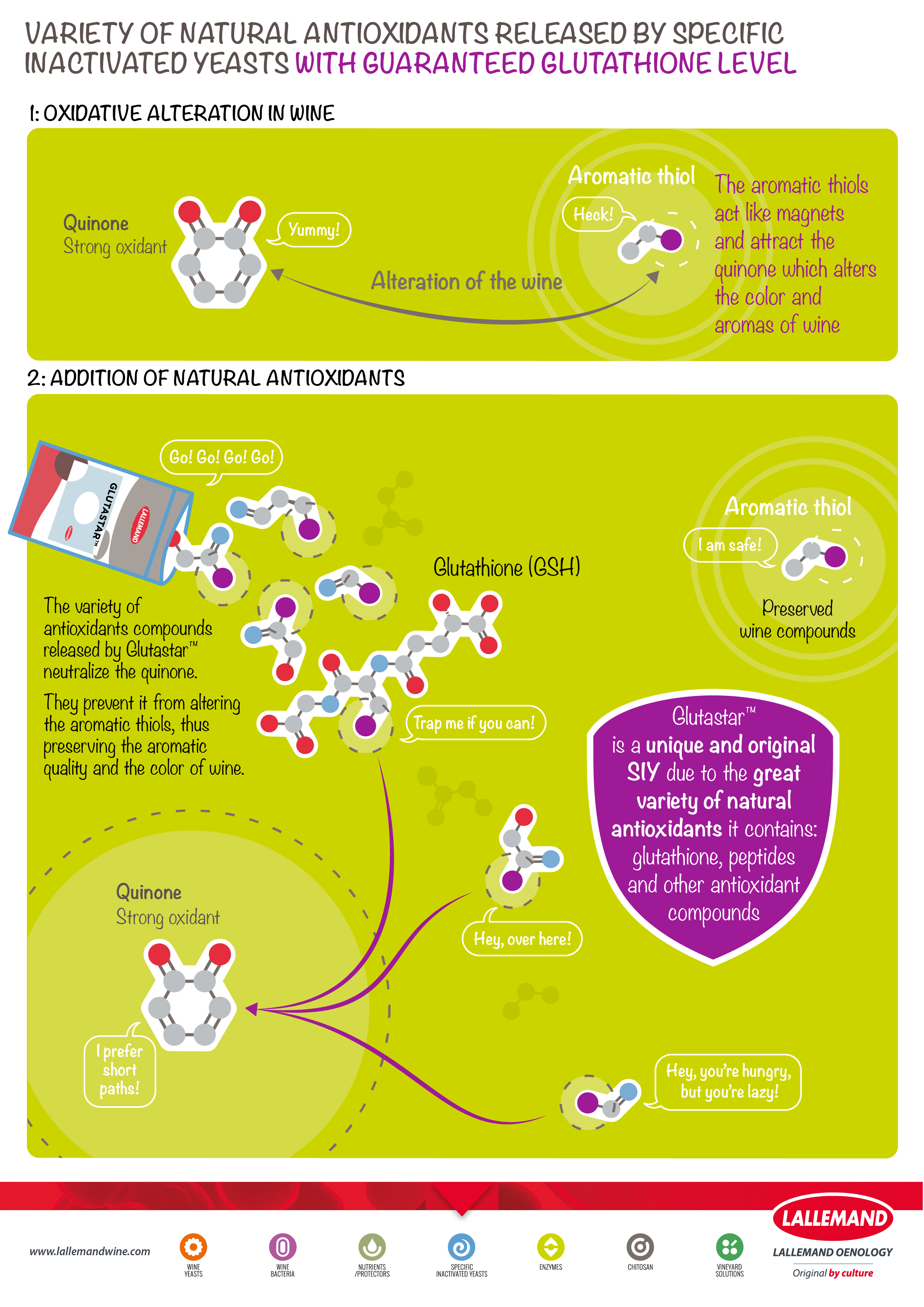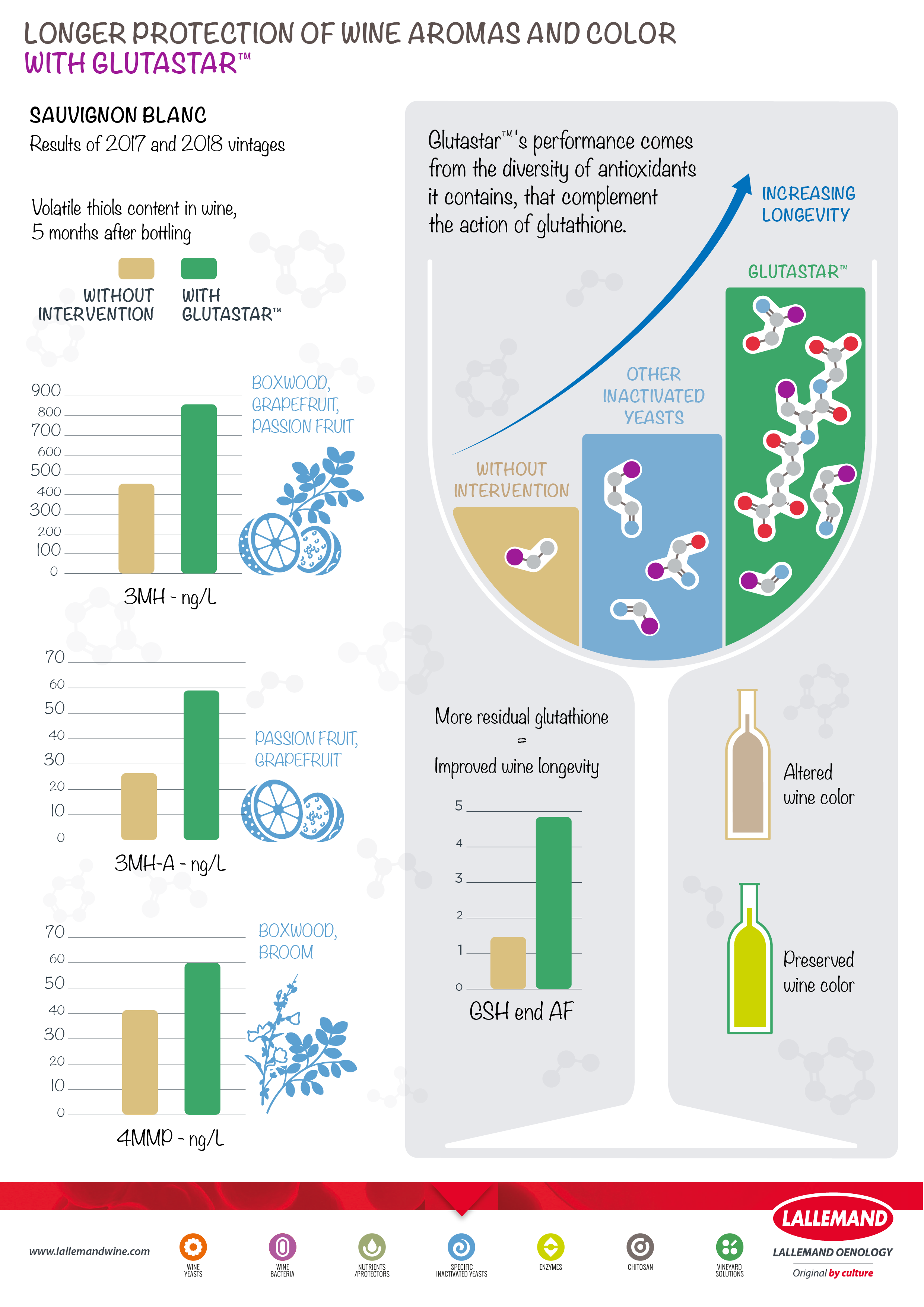
An original and new specific inactivated yeast to improve the oxidative stability of white and rosé wines
Publiée le 23/09/2020 07:55This paper presents a research work carried out in collaboration with the University of Burgundy, which has highlighted the impact of a new specific inactivated yeast developed for the protection of musts and wines against oxidation.
This results from the application of an optimized production process to a unique strain of Saccharomyces cerevisiae yeast to maximize the biosynthesis and accumulation of intracellular glutathione and other compounds of interest.
Non-targeted metabolomic characterization has demonstrated the unique composition of the new inactivated yeast and its impact on wine compared with other inactivated yeasts (standard and high glutathione content inactivated yeast). In addition to its high content in reduced glutathione, the presence of other reducing peptides further increases the positive impact of this specific inactivated yeast on the oxidative stability of wine.
Numerous application trials have been carried out, at pilot scale in particular, on white and rosé vinifications during the 2017 and 2018 vintages, to evaluate the impact of this inactivated yeast on wine quality when added before fermentation (after pressing, during clarification or in pre-fermentation cold storage). The results show that early treatment with the specific inactivated yeast allows for better preservation of aromatic compounds and color as well as increased radical-scavenging activity in wines up to bottling.
White and rosé winemaking requires particular attention to the risks associated with the oxidation phenomena. Color and aroma are key determinants of wine quality and freshness for these wines and oxidative stability is therefore at the heart of winemakers’ concerns, especially given the current trend to limit chemical inputs, particularly sulfites.

In this context, research is leading to a better understanding of wine oxidation mechanisms and the development of new tools, microbiological tools in particular. These tools are aimed at improving the longevity of wines during aging and storage in the cellar and beyond after bottling.
Along with sulfite addition and common fining practices, inactivated yeasts rich in glutathione, which ap- peared about fifteen years ago, have found their place in winemaking protocols, in order to prevent oxidation in musts and thus preserve the color and aromatic quality of white and rosé wines. They are now included in the OIV Codex with precise specifications giving them the status of inactivated yeasts with guaranteed glutathione content.
Research work carried out at the IUVV (Dijon, Burgundy) has allowed the detailed characterization of a new inactivated yeast with guaranteed glutathione content that is unique and effective in relation to the oxidative stability of wine.
Glutathione is a tripeptide that can protect must and wine from oxidation through its ability to react with quinones to form the grape reaction product (GRP) (Cheynier et al., 1986) thus preventing browning and loss of aroma in wine.
The uniqueness of inactivated yeasts with guaranteed glutathione content is based on the combination of a specific wine yeast strain and an optimized process ensuring the synthesis of glutathione by the yeast and its accumulation in the reduced form in the intracellular content of the biomass before inactivation. Inactivated yeast preparations available to winemakers thus have higher or lower glutathione levels depending on the chosen yeast strains and the optimization of the process. Recently, considerable improvement in levels of reduced glutathione has been achieved through the use of a yeast strain selected for its unique properties and leading to the development of the inactivated yeast GPlus.

To characterize its originality and validate its practical interest, work has been carried out in the laboratory, in a model medium and in real musts, and at both pilot and industrial scales, using the metabolomic approach.
This research work has demonstrated the specific and unique characteristics of a Specific Inactivated Yeast, Glutastar, that explain its impact on the oxidative stability of wines.
Beyond the high content of reduced glutathione, the wealth of reducing compounds explains the antiradical activity of this tool. This property accentuates its protective effect in relation to multiple oxidative mechanisms. Thus the combination of glutathione, a trap for quinone with other active compounds that are traps for free radicals, makes it an innovative tool of choice for the control of wine aging. Finally, implementation at the earliest stages of the white or rosé vinification process ensures better preservation of color and aromas throughout the process and up to bottling.

You can read the complete technical article written about this research work, by clicking here.


